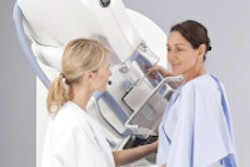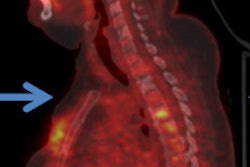Breast imaging software developer Matakina International is touting two studies of its Volpara volumetric breast density assessment software from the American Association of Physicists in Medicine (AAPM) annual meeting.
Volpara is used to estimate breast density based on mammography exams. The AAPM papers demonstrate that Volpara data can also be used to refine estimates of how much radiation dose is delivered during a mammography exam, supporting the development of patient-specific dose estimates, the company said.
The first study demonstrated the differences in radiation dose estimates for mammography studies when researchers adjusted the estimates according to actual volumetric breast density. Accounting for patient-specific breast composition led to estimated radiation doses that were significantly higher than those given by the mammography machines, according to Matakina.
Initial results suggest that current dose estimations may significantly underestimate the actual patient mean glandular dose, as they do not account for specific breast tissue composition, the researchers said. Patient-specific dose estimates may better reflect the actual dose delivered and the risk to the patient, they added.
The second AAPM study took personalization one step further by not only using patient-specific volumetric breast density, but also by considering how the tissue might be dispersed within the breast. Depending on the individual distribution with respect to the beam entrance surface, the mean dose delivered to the glandular tissue may be higher or lower than estimated by the current methods, according to the researchers.
Volpara supports most of the major digital mammography systems, it can be displayed on digital mammography and PACS workstations, and it be integrated into mammography reporting systems, according to Matakina.



















